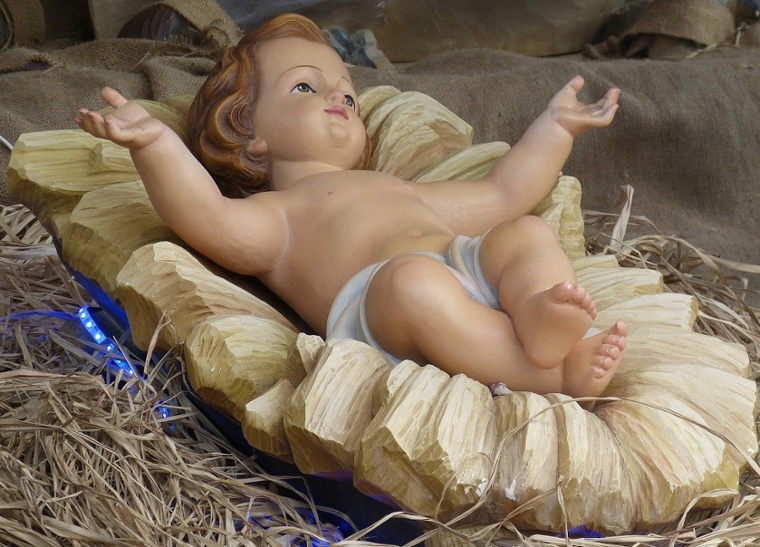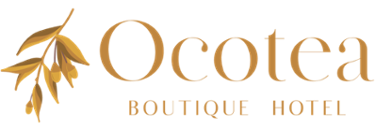A Costa Rican Christmas

The first year that I arrived in Costa Rica, it was mid-January and I had missed all the festivities. By the second year, we had met some fellow expats who took us down to see our very first Costa Rican Christmas Event. It was an eye-opener, I can tell you.
The majority of Costa Ricans are Roman Catholic, and we had been here through Semana Santa (the week-long celebration of Easter), so we expected it to be big. What we didn’t expect was the party vibe that settles in and stays from mid-December to the second week of January.
The “holiday season” for tourists is always the busiest, so I normally recommend that visitors come before or after the main rush. However, Christmas in Costa Rica is an experience like no other, and well worth a visit.
It starts at the beginning of December and the first major event on the calendar is usually a tree lighting ceremony. Most towns will have their own ceremony but the biggest one is, of course, in the Capital… and when I say big… I mean huge.
Tree Lighting Ceremonies
There are two main tree lighting ceremonies in San Jose. They mark the beginning of the holiday season. In Costa Rican culture they also represent hope and joy. Perhaps that’s why these events take place at the Children’s Museum, and the Children’s Hospital.

Costa Rican’s love Christmas, so when they kick off the holiday season, they do it with a bang… literally. Not only is there a lighting ceremony with thousands upon thousands of twinkling lights and a light show, there’s also fireworks.
IIn between all the flashes and bangs, you can enjoy some live theatre and music.
This event is meant to bring that hope and joy to the sick kids in the Children’s hospital. The giant tree is lit right outside where it can shine into their rooms and remind them of home.
There is also live theatre, clowns, and musical performances including Christmas Carols sung by the children’s choir. It’s hard to get more festive than that…
But then there is the ...
Festival De La Luz
This is the event that I told you about earlier, our first glimpse into Costa Rican Christmas cheer. We didn’t attend the big event in the city. We just headed down to the main street in town, found a spot and the crowd, and then stared, in awe… for three hours.
There were the usual floats with Christmas decorations sure, but there were also dance troupes, cheerleaders doing intricate routines,and marching band after marching band (some doing Christmas tunes, some doing salsa music). Some of the marching bands came from as far away as Panama and Argentina. There were clowns and jugglers, people on stilts, some walking on their hands and cartwheeling down the road. There were cowboys in full costume doing tricks on their horses.
Everything and anything that you could possibly think of eventually wandered by, including… eventually, Santa Clause riding in a dune buggy. The crowds that lined the street stood happily for hours, drinks in hand, cheering, or dancing along to the music and giving the event an air of excitement and happiness that was absolutely amazing.
The biggest version of this takes place in San Jose in the second week of December and the parade runs all the way from the Paseo Colon to El Parque de la Democracia. I can’t even imagine the spectacle that provides.
Let’s step away from festivals for a minute to talk about other local holiday traditions which happen between the Festival De La Luz and Christmas Eve...
Cartas Al Niño
Several weeks before Christmas, Costa Rican children send cartas al niño Jesus (or niño Dios or niñito Dios), asking for gifts. In much the same way that kids in North America send letters to Santa Claus. Since the country is mainly Roman Catholic, these letters are sent instead to the baby Jesus.
Special Decorations
Many homes put up a Christmas tree in the living room, and colored lights in and on the house, the same as we do at home.
In addition to that you will often find a Pasito or Portal, which is a Nativity scene. In many cases each piece has been handmade by members of the family, and can be passed down from generation to generation. You will often see a Pasito on the front lawn as well. It’s important to note though, that the manger remains empty until Christmas Eve when the baby Jesus is ceremoniously added.
In much the same way that we wander from house to house singing carols, ticos will often wander to friends and families homes to check out their Pasitos once they are up. This tradition starts around December 15 and is known as Las Posadas, and represents Mary and Joseph’s search for a place to stay. Eventually the searchers arrive at ‘the inn’, usually a church, and they all go inside to celebrate.
Another traditional decoration is a cypress wreath adorned with red coffee beans and colored ribbons.
Traditional Food and Drink
Every culture has its traditional Christmas goodies and Costa Rica is no exception. The main Christmas feast which takes place after Midnight Mass on Christmas Eve will have lots of delicious items and varies from family to family. The most common holiday yummies include rompope (which is like eggnog, but creamer with less spice), rum punch, roast pork with rice, tres leche cake, queque navideño (Christmas cake), pastries, coffee, agua dulce (drink made with the thickened juice from sugar cane) and tamales.
As I mentioned in a previous post, tamales are little bundles of love that are painstakingly created by the family, wrapped in plantain leaves and tied. Friends and family then exchange their little bundles with each other, thereby spreading the love around.
This year, my little community is getting together for our own Christmas celebration and my neighbours are going to show me how to make tamales. I’m really excited about it.
They can be made with chicken, pork or beef, contain mashed potatoes and rice, as well as a variety of vegetables and spices. Once they are exchanged, they are taken home and boiled inside the plantain leaf which then becomes a plate! I can’t wait to try them!
Niños Dios
Christmas Eve is all about the baby Jesus. This is when the family will gather and ceremoniously add the baby Jesus figurine to the nativity scene or Pasito, and place their gifts under the tree. It’s also when the children leave their shoes out for the baby Jesus to fill with treats and gifts. In some cases, this role is slowly being taken over by Colacho.
Colacho
This is the Costa Rican term for St. Nicholas or Santa Claus. He does make an appearance here and there during the holidays but that’s probably in deference to the “gringos” who live here. Santa isn’t part of a traditional Costa Rican celebration.
Christmas Eve
Once the baby Jesus has been added to the Nativity and the gifts have been placed under the tree, it’s time to get dressed up and head to church for midnight mass known as Misa de gallo. (which translates as “mass of the rooster”… Why? I do not know!)
When mass is finished, the family heads back home to enjoy the main Christmas meal. I guess it’s easy to understand why December 25th is a day of rest!
-1-1.png?width=800&name=Fotos%20Ocotea%202%20(21)-1-1.png)
Christmas Day
While much of the world is celebrating Christmas day, Costa Ricans are recuperating from a late night of gift giving and heavy eating. In some cases, they pack up the kids and head to the Fiestas de Zapote, if it is on. If it were me I’d probably sleep the day away holding my tummy and moaning quietly.
Fiestas de Zapote
The Fiesta de Zapote (named after the town of Zapote east of San Jose) has been held since 1846 to celebrate the end of the year. It takes place during the last week of December, but as far as I can tell, it’s a floating date.
Typically the Fiestas (parties) include lots of fun activities, such as:
- chinamos (stalls with food and drink)
- dancing with live music
- tope (horse parade)
- carnival rides
- games of chance
- bullfights
- beauty contest
The Fiestas run from sometime around Christmas day until January 5th. That’s because the Feast of the Three Kings is on January 6th.
As you can see, the holiday season in my adopted home is basically a string of back-to-back parties. Since cowboy culture is still going strong here, it wouldn’t be right to celebrate without an event exclusively about horses. Horses are still the backbone of many farming communities, and without them life would be a lot more difficult.
The Tope Nacional is much like a rodeo back home, except that all the fun takes place during a parade and not in a ring. The largest parade takes place (of course) in San Jose on December 26th.
Cowboys in beautifully detailed and embroidered costumes show off their gorgeous mounts by doing trick-riding for the crowds. The horses, also in their Sunday best, do spins and prance and bow. Their skill and the skill of their riders is impressive, but it’s important to remember that skills like that aren’t just for show. Those fancy moves help to keep the livestock they are moving in line, and heading in the direction they are supposed to be going.
When most North Americans hear the word ‘Carnaval” they picture Mardi Gras in New Orleans, and they wouldn’t be far from the truth. Carnaval, which takes place December 27th, has the same vibe. Dancers in costumes, clowns, jugglers, fun floats, and marching bands take to the streets once more travelling from Avenida Segundo to Paseo Colón, in San Jose, while the crowds clap and dance along.
I do have to say, it’s way more enjoyable to have a holiday parade that doesn’t require five layers and some Hot Pockets to survive!
Last but not least is the Feast of the Kings. I say “not least” because there are other celebrations that take place in mid-January. As far as I know, they aren’t really part of the holiday itself, so I’m not going to include them.
Feast of the Three Kings (Epiphany or Theophany)
January 6th is the Feast of the Three Kings. It’s generally thought to be the day when the wise men first met baby Jesus and it wraps up the official holiday celebrations.
This is just as well, because by now you need a week off to sleep and a month more to work off all the food and drink you’ve consumed.
Costa Rica doesn’t really celebrate “Día de Reyes” the way many Latin American Countries do, but certain Cantons (like counties) will have three men dressed as kings riding horseback through the streets to represent the Magi.
I almost need a nap just from thinking about all that celebrating.
As you can see, there are many fun and interesting events going on here from mid-December to mid-January. If you’re planning to travel during the high season, you really can’t go wrong attending a typical holiday event. The happy, carefree fun is palpable, the music makes you want to dance along and there’s rum punch to be had.

It’s a Pura Vida Navidad that can’t be had anywhere else!





